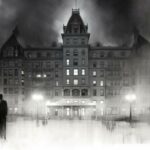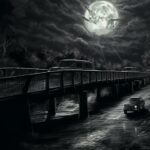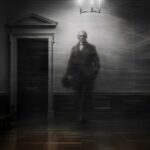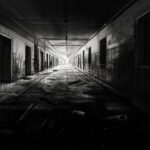Table of Contents
Washington DC, known for its rich history and iconic landmarks, also harbors a darker side with tales of the supernatural. Bold visitors seeking thrills can explore the city’s most haunted locations, where ghosts and eerie occurrences are part of the lore. These sites promise to send shivers down the spine of even the most skeptical, blending historical intrigue with otherworldly whispers.
If you are doing any kind of paranormal investigation here, you might want to take a look at our ghost hunting equipment list. Locations like this get a reputation because they are high activity and you don’t need much to see for yourself.
White House
Washington, D.C., the heart of American politics, is home not only to the living who walk its historic corridors of power but also, some say, to the spirits of the past. Among the city’s storied buildings, the White House stands out as a beacon of American history, and it is whispered to be a dwelling place of more than just political ghosts. The very walls of this iconic mansion are steeped in tales that chill the spine, as generations of staff and visitors have reported eerie encounters within its hallowed halls.
The White House has been the stage for the drama of a nation since John Adams first crossed its threshold as its initial presidential resident. Since then, each president has left a mark on the building, but it appears that some have never truly left. The Executive Residence, the heart of the White House, is where many of these spectral sightings occur. It is here that the ethereal residents of America’s past are said to linger, their unfinished business anchoring them to the world of the living.
One of the most notable ghostly inhabitants is none other than Abraham Lincoln. His towering stature and the weight of a nation divided by civil war seem to have bound him to the place even beyond death. Lincoln’s spirit has reportedly been seen in the very room where he signed the Emancipation Proclamation, and his presence is often felt during times of national strife, as if keeping watch over the country he fought to keep united.
It is not just Lincoln who walks the shadowy corridors; Abigail Adams, the wife of the second president and the first First Lady to reside in the White House, is said to be seen, arms full of laundry, drifting through the East Room. This area was once the site where she hung her washing, and it appears she continues her domestic duties from beyond the grave.
The West Wing, a hive of political activity, is also not immune to these unearthly encounters. Staff have reported unexplained noises and the sensation of being watched, as if the decisions made within those walls are scrutinized by an invisible assembly of former leaders.
Even the Blair House, a stone’s throw away, is not without its own phantasmal visitors, hosting dignitaries and the departed alike. The ghost of President Harry Truman is said to knock on doors in the dead of night, perhaps checking in on guests as he once did in life.
These stories are woven into the very fabric of the capital, and while skeptics may dismiss them as mere superstition, they serve as a reminder that history is not just found in books but also in the whispered tales of those who have gone before. The White House, an emblem of American legacy, is a place where the past and present collide, and the footsteps of history echo long after the living have departed.
“I was just chilling in the White House when I swear I saw Abraham Lincoln’s ghost hanging out in the hallway, like he owned the place.”
Octagon House
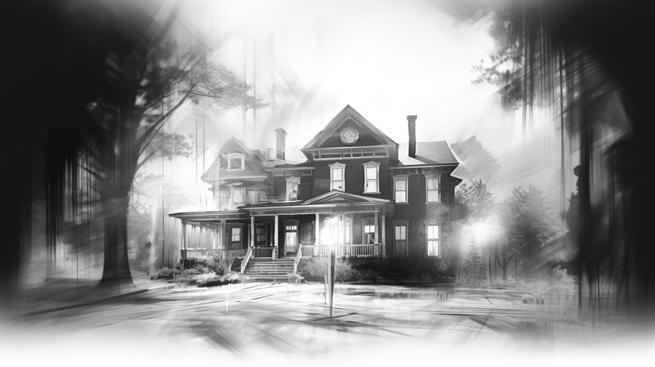
The Octagon House in Washington, D.C., stands as a beacon of historical intrigue and spectral whispers. With its unusual eight-angled design, it catches the eye of both the living and, as tales suggest, the dead. The house’s eerie reputation stems from its storied past, which includes being the temporary residence of President James Madison and his wife Dolley after the White House fell victim to flames during the War of 1812.
Crafted as the winter abode of John Tayloe III, The Octagon House soon became more than a mere residence. It turned into a stage for tragedy and tales of the supernatural. The echoes of the past seem to reverberate through its walls, as it is said that the spirits of those who once inhabited its rooms have never truly departed. Whispers of ghostly apparitions and unexplained phenomena have long been part of the house’s lore, turning it into a magnet for those with a penchant for the paranormal.
One of the most well-known stories is that of Tayloe’s daughters, who, according to urban legend, met their untimely demises in the house. The tale goes that they fell to their deaths down the spiral staircase in two separate, yet equally tragic incidents. Their spectral figures are rumored to haunt the staircase, a stark reminder of the sorrow that once gripped the family.
Another ghostly resident is said to be a slave woman who perished at the house under mysterious circumstances. Her spirit is often cited as the source of inexplicable cold spots and the feeling of an unseen presence looming over visitors.
Additionally, it is said that during the British invasion of Washington, soldiers who died on the nearby streets were temporarily laid to rest in the Octagon’s garden. Some believe that their spirits, too, have found a permanent home within the house’s walls.
The Octagon House, with its tales of woe and wandering spirits, has become a cornerstone of Washington D.C.’s haunted history. It serves as a chilling reminder that some stories never die, and some residents never leave. Visitors and ghost enthusiasts flock to the site, eager to catch a glimpse of the past that still lingers in the air, hoping to touch the fabric of the otherworldly that is woven into the very essence of this historic dwelling.
I heard that back in the old days, one of Tayloe’s daughters got so mad at her dad that she ran down the stairs, tripped, and died right there. Now people say her ghost can’t rest and keeps showing up, spooking folks who visit the Octagon House.
Hay-Adams Hotel
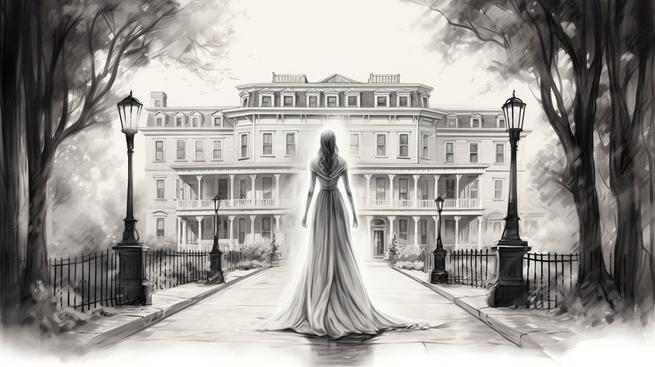
Nestled in the heart of Washington D.C. at 800 16th Street NW stands the Hay-Adams Hotel, a place where luxury and legacy intertwine with the spectral whispers of the past. The hotel, an embodiment of opulence since its doors swung open in 1928, occupies the former site of the homes of John Hay and Henry Adams, influential figures whose names the hotel bears with pride.
The Hay-Adams is more than a mere hotel; it’s a tapestry of American history, woven with threads of mystery and the supernatural. It is said to be haunted by the ghost of Marian “Clover” Hooper Adams, an American socialite and photographer, whose life was tragically cut short by her own hand in 1885, following bouts of depression after her father’s death.
Clover, the wife of Henry Adams, was a bright spark in the elite social circles of the capital. Along with her husband, John Hay—Abraham Lincoln’s private secretary and later Secretary of State—and others, they formed a close-knit group, famously dubbed the “Five of Hearts.” Within the walls of their residence, the air was rich with the aroma of political discourse and the laughter of the Washington elite.
Yet, beneath the glittering surface of soirées and salons, Clover’s world was crumbling. Her untimely demise left an indelible mark on the property. The Hay-Adams Hotel, built on the footprint of such personal tragedy, seems to echo with the remnants of her sorrowful spirit.
Guests and staff alike report unearthly occurrences that defy explanation. Doors, with a mind of their own, unlock without human intervention; radios, as if bewitched, flick on and off, orchestrating a silent symphony of the bizarre. Objects, guided by invisible hands, find new resting places, and the air is intermittently pierced by the chilling sound of a woman’s grieving wails.
Those with a keen sixth sense may encounter more than just the chill of a cold spot; they speak of mysterious orbs and full-bodied apparitions, glimpses of the hotel’s otherworldly permanent guest. Clover’s presence is the elephant in the room, an unseen but deeply felt specter that continues to haunt the Hay-Adams.
Despite the eerie tales, or perhaps because of them, the Hay-Adams Hotel remains a beacon for the curious and a must-see for ghost tour enthusiasts. Its haunted reputation adds a layer of intrigue to the already storied walls, inviting those brave enough to explore the liminal space where history and legend converge.
I stayed at the Hay-Adams Hotel and, no joke, I felt a chill and heard whispers in my room at night—some say it’s the ghost of Clover Adams, still hanging around from the old days. It was spooky, but kind of cool to think I might’ve bumped into a piece of history!
Capitol Hill
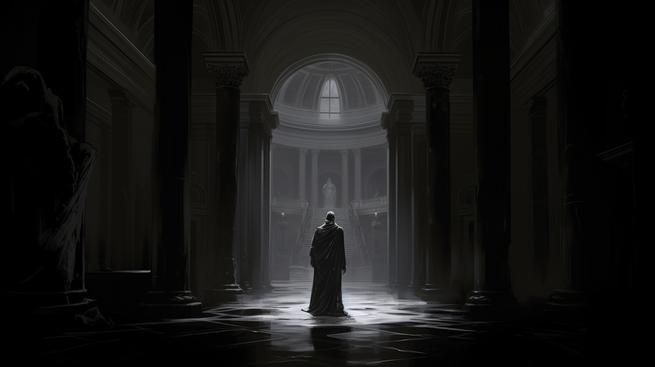
Capitol Hill, the political heart of the United States, brims with tales of the past that send shivers down the spine. This storied locale in Washington, DC, has seen the ebb and flow of the nation’s history, and with it, a host of ghostly legends have taken up residence in the hallowed halls and shadowy corners.
One such spectral inhabitant is said to be none other than the distinguished architect of the Capitol, William Thornton, whose visionary spirit lingers on, overseeing the preservation of his masterpiece. Witnesses claim to see Thornton’s apparition examining the walls and corridors, perhaps ensuring his creation withstands the sands of time.
The Capitol’s Statuary Hall, a veritable forest of marble and bronze, serves as a silent congregation for the nation’s late lawmakers. Here, the echoes of the past intermingle with the whispers of the present. It’s said that at the stroke of midnight, these stony figures come to life, reenacting fiery debates and momentous decisions that once reverberated through the chamber.
The tale of the “Demon Cat,” a phantasmal feline, haunts the cryptic underbelly of the Capitol. This eerie entity, growing before disbelievers’ eyes, is a harbinger of national crises. It emerged before the stock market crash of 1929 and the assassination of President Kennedy, leaving a trail of cold dread in its wake.
Not to be outdone, the Old Supreme Court Chamber has its own resident ghost — the indomitable John Quincy Adams. After collapsing at his desk, his indignant spirit is rumored to bang his gavel in the dead of night, perhaps in perpetual dissent or to call the nation back to its founding principles.
The Capitol’s hauntings also extend to more recent history, with reports of slain officers patrolling the grounds, forever standing their vigilant watch. And whispers of the late Senator Henry Clay’s presence suggest he still wanders the Senate, a colossus in the pantheon of American politics, unable to part with the institution he so dearly influenced.
Capitol Hill’s haunted history is a tapestry of the supernatural woven into the very fabric of America’s chronicles. These stories remind us that history is alive, and sometimes, it refuses to be buried. The tales endure, igniting the imagination and offering a spectral link to the nation’s past, a reminder that history’s figures may not rest as quietly as their portraits suggest.
I swear, late one night on Capitol Hill, I saw the ghost of old William Thornton wandering the halls, still checking on his architectural masterpiece like he can’t let it go. And I’ve heard folks say that if you’re there at midnight, those statues in Statuary Hall start moving and debating like they’re alive again—it’s seriously spooky.
Ford’s Theatre
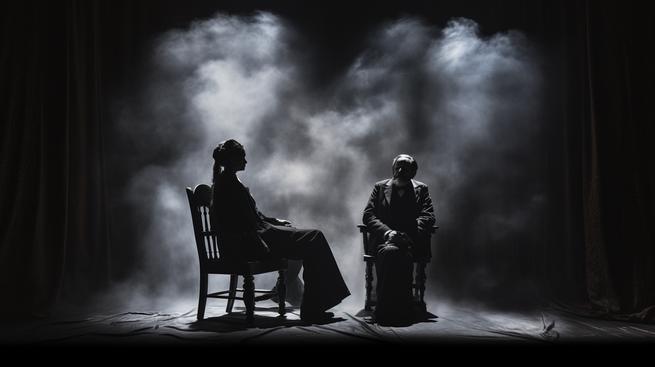
Ford’s Theatre in Washington, D.C., carries a legacy steeped in both historical significance and eerie tales that chill to the bone. The theatre famously served as the backdrop for one of the most shocking moments in American history—the assassination of President Abraham Lincoln. Since that fateful night on April 14, 1865, the theater has been at the heart of ghostly lore, attracting those who seek to unravel its spectral mysteries.
The ghost of Abraham Lincoln himself is said to be the marquee spirit haunting the venue. Witnesses claim to encounter eerie anomalies such as cold spots, unexplained footsteps, and the spectral sounds of gunshots and screams echoing from a bygone era. Some visitors report glimpses of apparitions donning stovepipe hats, a clear nod to the theater’s most famous patron.
But the specter of Lincoln might not tread the boards alone. The ghost of Mary Todd Lincoln, the president’s widow, is also rumored to make appearances, adding to the theater’s otherworldly reputation. The notion that the Lincolns’ restless spirits wander Ford’s Theatre suggests their tragic tale left an indelible mark on the fabric of the place.
The theater’s history is not without additional dark chapters. In 1893, a portion of the building tragically collapsed, claiming the lives of 22 people. This disaster only added to the theater’s haunted tapestry, with some suggesting the victims’ spirits still linger, trapped within its walls.
Ford’s Theatre stands as a monument to American history, but many believe it also serves as a spectral playhouse where the past refuses to stay silent. The theater’s haunted reputation continues to draw the curious and the brave, all hoping to catch a glimpse of its ghostly cast or feel the chill of history’s touch. Whether one believes in the supernatural or not, the haunted tales of Ford’s Theatre remain a captivating chapter in the annals of Washington D.C.’s storied past.
I swear, the night I visited Ford’s Theatre, I felt a chill and heard a whisper like Lincoln himself was right there in the shadows. And there was this weird moment when it seemed like Mary Todd was sitting in the balcony, just staring into space.
Dumbarton House
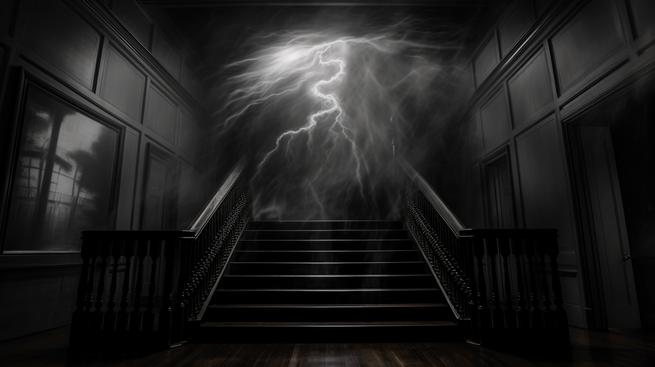
Dumbarton House, a stately historic landmark nestled in the heart of Washington, DC, harbors more than just relics of the past; it’s a hotbed for spectral storytelling. According to local lore, the echoes of yesteryear manifest in a ghostly presence that roams its venerable halls.
The tale takes root in 1806, when a young girl named Eliza Denison graced the house with a visit alongside her aunt and uncle. One fateful night, a thunderstorm’s fury roused Eliza from her slumber. She recalled an open window on the stair landing, vulnerable to the storm’s wrath, and rose to secure it.
Upon completing her task, Eliza turned back to her room, but a twist of fate had her cast a glance over her shoulder. In that split second, lightning tore through the darkness, painting the room in a stark, ephemeral light. In that brief tableau, an otherworldly figure was etched into her memory—a sight that would seed the haunted history of Dumbarton House.
This spectral sighting wasn’t a one-off scare; it was the opening act of an ongoing supernatural saga. Over the years, staff and visitors alike have whispered of eerie encounters, often tied to the same stair landing that anchored Eliza’s ghostly encounter. These anecdotes have woven a rich tapestry of the paranormal, with Dumbarton House standing as both the stage and the star.
Whether it’s the soft creak of old floorboards or the inexplicable chill that descends without a draft, the presence at Dumbarton House leaves skeptics and believers alike with a sense that it’s more than just the walls that talk. The house itself seems to hold its breath, as if waiting for the next chapter of its ghostly guest to unfold.
So I was at Dumbarton House, right? And people say there’s this ghost of a girl who shows up during storms, just after lightning flashes—it’s totally spooky!
The National Theatre
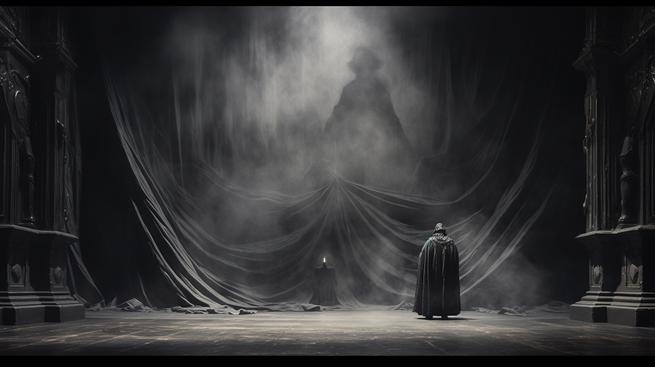
The National Theatre, nestled on Pennsylvania Avenue, stands as a testament to Washington, D.C.’s rich theatrical history. Revered as the oldest continuously operating playhouse in the nation, its modest exterior belies the spectral drama that unfolds within its historic walls. Audiences flock here for a medley of modern hits and timeless classics, all a stone’s throw away from the White House. Yet, amid the applause for the living actors, an ethereal figure commands the spotlight: the ghost of John McCullough.
John McCullough’s story is as tragic as the plays he once graced. A renowned thespian of his time, his untimely demise nearly a century-and-a-half ago did little to dim his love for the stage. His spectral presence is as much a part of the theatre as the curtains and the stage itself, a phenomenon that both enthralls and unnerves visitors. The reasons that tether McCullough’s spirit to The National Theatre are shrouded in mystery, but they are as compelling as the plot of any Shakespearean tragedy he once performed.
The National Theatre’s haunted reputation is a mosaic of eerie accounts and ghostly whispers. Patrons and performers alike report sightings of McCullough’s ghost, a silent sentinel in the wings, observing the living as they tread the boards. His apparition is said to be an omen, a keeper of the theatre’s legacy, ensuring that the show goes on, come hell or high water.
In the realm of the supernatural, The National Theatre is a stage where the past refuses to bow out. It is a place where history’s echo looms large, where the line between the material world and the afterlife blurs. For those who dare to witness it, the theatre offers more than just a night of entertainment—it offers a brush with the otherworldly, where one might catch a glimpse of McCullough’s ghost, forever married to the limelight, forever part of the theatre’s soul.
I heard that the ghost of this old-time actor, John McCullough, still hangs around The National Theatre; folks say he just can’t seem to leave the stage behind, even after all these years. It’s pretty wild—you might catch a glimpse of him if you’re there for a show!
Oak Hill Cemetery
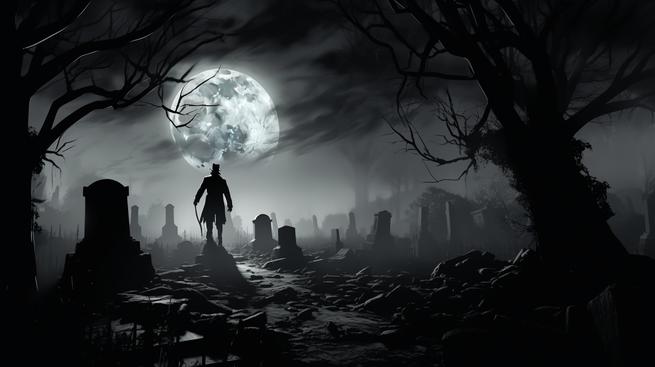
Oak Hill Cemetery in Washington, D.C. stands as a repository of the city’s past, its lush grounds and ancient tombstones holding whispers of the dearly departed. Among the serene beauty, there lurk tales that chill the spine, giving the cemetery a reputation for being haunted.
The cemetery, a haven for history buffs and ghost hunters alike, is a place where the veil between the living and the dead seems perilously thin. Visitors often report eerie sensations, the feeling of being watched, or the faint rustling of leaves when there is no wind. It is as if the spirits are reluctant to let go of their mortal coil or perhaps are keen to share their stories with those who walk among their graves.
One of the most gripping tales is that of a mournful president. The spectral figure of Abraham Lincoln has been seen wandering amidst the tombstones, his tall, stoic figure a silent sentinel in the night. Some say he is searching for his beloved son, Willie, who was once interred there before being moved to the Lincoln Tomb in Springfield, Illinois.
The cemetery is also said to be home to a malevolent cold spot, an area where the temperature drops inexplicably, chilling to the bone any who dare to enter. It is as though a ghostly hand reaches out from the beyond, a reminder that some things cannot be explained by the living.
A more menacing presence, known as the demon cat, is rumored to prowl the grounds. This feline apparition grows to the size of a panther as it stalks its prey, its eyes glowing with an otherworldly fire. The demon cat is said to be a harbinger of doom, appearing before national tragedies and presidential transitions.
For those who find solace in the whispers of leaves and the quietude of the cemetery, Oak Hill offers a Memorial Tree Program. It allows the living to honor their loved ones, ensuring that their memory grows strong like the mighty oak.
The Oak Hill Cemetery invites the brave and the curious to explore its rich history. It is a guardian of the past, where each tombstone tells a story, and every shadow could be a spirit waiting to be acknowledged. The cemetery’s gates are open to those who seek to unravel the mysteries of the nation’s haunted capital, to walk among the echoes of yesteryear.
For more information or to quench your thirst for the macabre, visit Oak Hill Cemetery at 3001 R St NW, Washington, D.C. 20007, call 202-337-2835, or email info@oakhillcemeterydc.org. Join the ranks of the haunted historians and perhaps leave with a ghostly tale of your own.
I was strolling through Oak Hill Cemetery when I swear I saw Abraham Lincoln’s ghost, tall and sad, like he was looking for something, or someone, in the moonlight. It gave me the chills, but I couldn’t help feeling a bit sorry for him, too.
Woodrow Wilson House
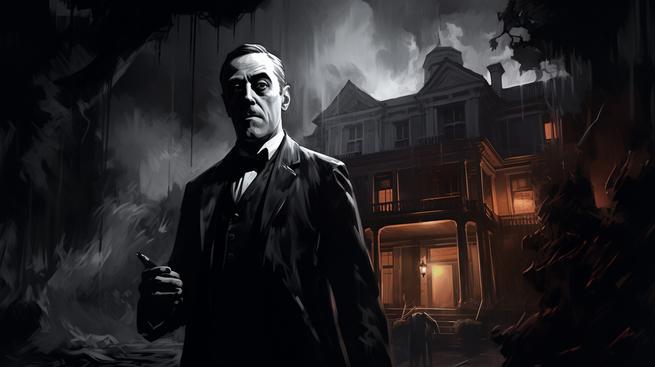
The Woodrow Wilson House in Washington, DC, stands as a spectral testament to the restless spirit of the 28th President of the United States. After leaving the Oval Office in 1921, Woodrow Wilson sought to reinvent himself through scholarly pursuits and a law practice. Unfortunately, Wilson’s dreams were dashed by the lingering effects of a severe stroke that ultimately led to his demise in 1924. It seems that the specter of his unfulfilled ambitions and the shadow of his incapacitation refuse to leave the historic residence.
Visitors and staff at the Woodrow Wilson House often report eerie occurrences that send shivers down their spines. The ghost of Woodrow Wilson, it is said, haunts the halls of his last abode. Witnesses have recounted hearing the distinctive sound of a cane thumping against the floorboards as an invisible presence ascends the staircase to the master bedroom. There, the heartbreaking sobs of a man echo through the walls, as if the former president is weeping over his thwarted hopes and the bitter end to his political career.
The ghostly figure of Wilson, cloaked in an aura of despair, sometimes materializes seated at his desk. Dressed in a shirt, tie, and jacket, and shielded by an old-fashioned lap robe, the apparition’s countenance is a haunting reminder of his physical afflictions. The left side of his face droops, a telltale sign of his paralytic stroke, while the right side bears a frown that seems to reflect on his life’s missed opportunities more than its triumphs.
In 1969, the unease became too much for one caretaker, who handed in their notice, no longer able to endure the house’s haunting “slow shuffle” and inexplicable noises. To this day, the Woodrow Wilson House remains a place where the past refuses to be silent, and the former president’s spirit seems to be caught in a limbo of perpetual reflection and sorrow. Visitors flock to the house, curious to encounter the remnants of history and perhaps catch a glimpse of Wilson’s ghost, a man caught between the worlds of the living and the dead, his legacy forever etched in the annals of American history and the haunted walls of his final home.
I swear, every time I walk past that old Wilson House, I get the creeps, like I can hear the thump of his cane and sometimes, a faint sound of a man crying upstairs. It’s like Woodrow’s ghost just can’t let go of that place.
Decatur House
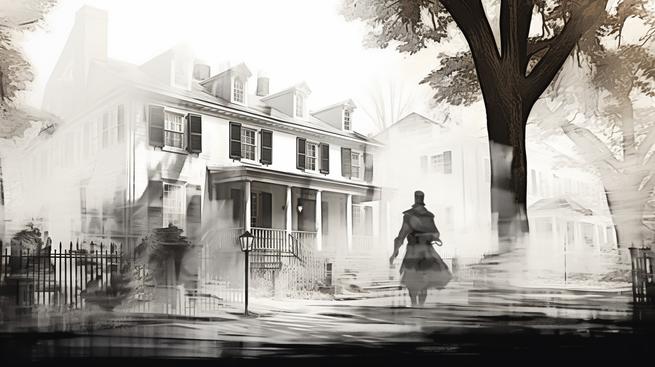
The Decatur House in Washington, D.C. stands as a beacon of the supernatural, its walls echoing with the whispers of the past. Built in 1818, this historic edifice was the brainchild of none other than Benjamin Henry Latrobe, a master of neoclassical architecture and the visionary behind many of the capital’s landmarks. The house’s original master, Commodore Stephen Decatur, was a lion of the seas, celebrated for his valiant triumphs in the Barbary wars.
However, the Decatur House is not just a mere testament to past glories; it harbors a more sinister reputation as a den of specters and unsettled spirits. It seems that some guests have overstayed their welcome from the realm of the living. The house, now a national historic monument, is infamous for its ethereal occupants, making it a prime destination for those who wish to brush shoulders with the otherworldly.
The most notorious phantom is believed to be Decatur himself, who met a grim fate not on the high seas but at the bitter end of a dueling pistol. The commodore’s untimely demise left more than just a grieving widow; it seems his spirit could not bear to part with his earthly domain. Visitors and staff alike have reported eerie occurrences, from inexplicable chills to ghostly apparitions, hinting that Decatur’s presence lingers on.
Adding to the house’s haunted heritage is the sorrow that seeped into its very foundation. The echoes of past grudges and misery have turned the Decatur House into a playground for the restless dead. Despite its ghoulish residents, the mansion stands proudly, offering its hallowed halls for events—if one dares to share the space with its ghastly tenants.
The Decatur House’s haunted history remains a whispered legend among the annals of Washington, D.C.’s spectral haunts. Its walls, a silent witness to the weight of history, continue to hold fast against the tides of time, all while cradling the souls that refuse to fade into the annals of obscurity.
I heard that the ghost of Commodore Decatur still haunts his old house, pacing the halls at night where he bled out after a duel gone wrong. People say the air gets cold and heavy when his spirit’s nearby, like he’s still angry about his untimely end.





